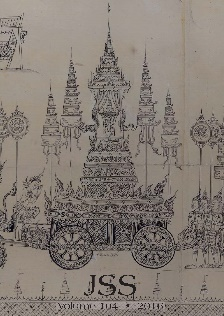Contending Identities: Islam and Ethnicity in Old Bangkok
Main Article Content
Abstract
Over the century-and-a-half history of “Old Bangkok” (1767-1910), a number of villages representing six Muslim ethnic groups – Persian, Arab, Indian, Cham, Malay, and Indonesian – were established in the Thai capital’s peripheral precincts. The biographies of twenty-six of those settlements are briefly reviewed here to reveal their place in Bangkok’s urban development. The status and location of those ethnic minorities along the urban perimeter were governed primarily by the political conditions of their arrival. The occupations they took up filled specialized niches in the city’s economy. Their social isolation persisted largely due to their cultural inversion under Siam’s benign policy regime. Though overtaken by later developments, particularly the rise of Thai nationalism and the global Islamic resurgence, the role formerly played by those villages in Old Bangkok can be more fully appreciated, in retrospect, in terms of their varied ethnicity than simply with regard to their shared religion.


